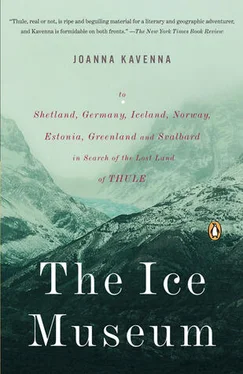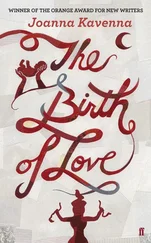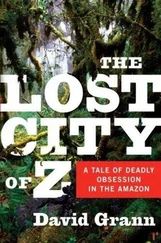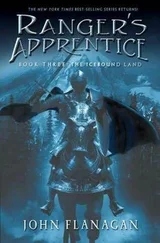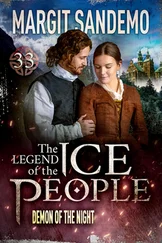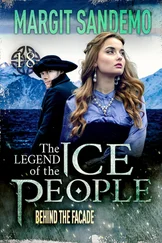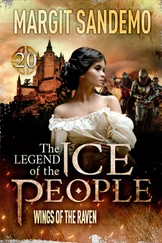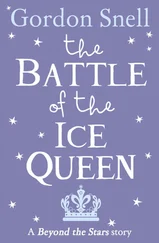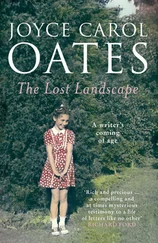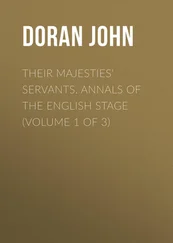‘If I could perhaps . . .’ he was muttering.
‘Yes, of course,’ said Meri, raising his head. He was polite to everyone, deliberately so, it seemed. The new arrival moved across to Meri and said something quietly in Estonian. I shifted in my seat, aware of a slight headache from the coffee. The room was cold; I reached for a coat and dragged it across my shoulders.
There was a short exchange in Estonian; then the man shuffled out.
I stood to leave, and Meri smoothed down his tie, smoothed his hands across his jacket.
‘So you have the story of Thule,’ he said, bringing everything to a final point, rubbing his hand across his forehead.
He stood and stared around the room.
I admired the man; his canvas was vivid and broad-brushed. It had a sense of drama: the blinding light, the flushed red sky, the darkness spreading across the land. The Germanic tribes saw the sun falling to the earth in the east; dust rose and clouded across the skies. The explosion was immense and the effects could be seen for hundreds of miles around. The cataclysmic event passed into folklore—the burning island, the setting of the sun. When Pytheas came along the coast, the natives, speaking an early Baltic language, said, ‘Tuli! Tuli!,’ pronouncing it Tooley, Tooley, and pointed to the east. Fire, fire, this was where the fire had fallen, where the sun had crashed to the earth. This was where Saaremaa burned.
He thought it was true, like Nansen, like Burton, like the long line of explorers and writers, solving the ancient mystery of the north. Meri believed his own words, believed them passionately. But there was something more to Meri’s Thule. Thule had become a story about purity, about an ideal land. Meri had said himself that the movement towards independence had burgeoned from environmental beginnings. At the end of the 1980s, purging the land became bound up with purging Estonia of influences from Moscow. Meri had been an environmentalist, a nature writer; he had argued against the Soviet exploitation of Estonian soil. As president, Meri had often defined Estonia as an environmentally friendly Scandinavian country, trying to lift the land out of the years of occupation. Thule was part of this reserve of symbolism, part of this sense of the Nordic allegiances of Estonia. It was another politicised Thule, another Thule for independence. Thule for regeneration, deployed to draw a small country out of the dark aftermath of World War Two.
The sky outside was dark. Meri moved slowly through his rooms, lined with books, to the entrance hall. I shook his hand, and he bowed.
‘Thank you for coming,’ he said, smiling. ‘I hope you enjoy your stay in our beautiful land.’
The tall man stood in the doorway of his house, as the peninsula stretched away under the cold evening. His study was full of books he had to read. There was not so much time, he had said, perhaps there would not be time to do everything. But he had added his voice to the argument, the ancient debate about Thule. He waved at the car, as I drove away. The night was cold as I drove along the Viimsi Peninsula, back towards Tallinn, where the lights of Toompea shone up the hillside.
The meteorite fell on the island of Saaremaa, so I drove towards the south.
I drove through the juniper glades and the evergreen forests, the twisted ruins of Communism scattered among the trees. The route ran along a deserted single-lane road, dwindling at the edges into rubble. The view scarcely changed: the long level roads, the forests stretching away, the red trees shining in the rain. The road was covered in rainwater and the car slid past the collective farms, their blue tiles and Soviet functional outhouses left to decay, grass growing through the shattered windows. At the town of Paldiski I was trying to find something to eat, but there was nowhere to buy anything in the town except a barren supermarket, its shelves bare. The town was a bleak place to pause at: a cluster of crumbling high-rise apartment blocks, some of them standing empty, awaiting demolition. The shops were plastered with dull signs; the men and the women stood on the street talking and staring. The buildings were streaked with fading blue paint. Smoke was rising from the chimneys of the main boiler house, a block of dirty bricks, surrounded by patches of grass and dirty puddles. Around the boiler house stood the ruins of functional offices, jagged iron skeletons, standing neglected on sodden waste ground.
There had been Russians here since Peter I built Paldiski into a port, intending to fortify it, though the work was never finished. The scrubland stretched to the cold blue sea. The earthworks for Peter I’s fortification remained along the windblown coast, where the trees had been bent by successive lashings from the sea. The town was used and smashed and burned during World War Two; it was a naval base for the Soviet forces, and the civilians were bundled off, sent elsewhere, sent away into the juniper forests. It was filled with Russian sailors, and then the Germans arrived and made it a prisoner-of-war camp. When the war turned and the Soviet Army marched back towards the town, the German soldiers torched it as they retreated. During the Soviet era Paldiski was a garrison, and the outskirts of the town were full of military relics, significant objects, ugly decrepit concrete bunkers, crumbling slowly. By the coast there was a gargantuan office complex, with rooms stacked like prison cells in tight columns. A line of trees stood before it, branches outstretched, failing to hide its decayed walls. Looking for somewhere to buy some food I drove around this ancient office relic, a route no Estonian could have taken during the Soviet occupation, because the area was sealed off and civilians were forbidden to go there. The windows were empty, the glass was shattered, the roof had fallen down. It was a concrete skeleton, brooding on a windblown stretch of coast.
I found two women talking on a street corner by the building, staring indifferently across the patchy grass towards the blank sides of the building. ‘What was the building?’ I asked, shouting above the noise of the sea and the tormented sounds of ancient cars moving along the road. They didn’t understand, I had to repeat the question, pointing and smiling, and then one of them said, ‘ Akula ,’ and turned away. Looking back at the concrete relic, it was surprising, but I saw that it was shaped like a submarine, with a central tower and two slab-like arms on either side, stretching across the orange scrubland. It would have housed a replica submarine, used for training, hidden inside one more piece of Soviet concrete.
The building had been fenced off, but now the fence was broken and easy to climb. There were fences throughout Paldiski, red fences with signs telling the inhabitants to keep out, some of them defunct, breached in places, others apparently functional, enforcing contemporary prohibitions. There was a ring of fences around the silent derelict buildings on the outskirts of the town. Faded fences, tottering on their posts.
There were dirty secrets, smuggled away after independence, like the nuclear contents of a pile of cream bricks, on the edge of Paldiski, with a rusty red-and-white chimney rising above. The Russians had kept the contents to themselves—a reactor or two, a laboratory—speeding the spent fuel back to Russia on tracks built for the purpose, a decontamination express train, carrying nuclear litter across the Russian border. They buried the rest in concrete.
When the train had disappeared and the tracks had disintegrated, there were still Russians in Paldiski. Estonia was still full of Russians. In Tallinn the lucky ones ran restaurants and tipped vodka into the glasses of the newly rich like Karin and Mart, who called the Russian bars kitsch and ordered up blinis and caviar. But many of the leftover Russians were still living in bleak towns, coastal ruins, living in the shattered blocks left by the Soviet Union. They were joined by the Estonian poor: the unemployed, the single parents who were sent to cheap housing in towns no one wanted to live in. The Russians lined the streets of Paldiski, whiling away the hours. They talked in groups, their eyes on the ragged coastline and the concrete blocks. Maybe the men were drunk, maybe they were just moving slowly through the afternoon, because there was nothing to do with the evening.
Читать дальше
